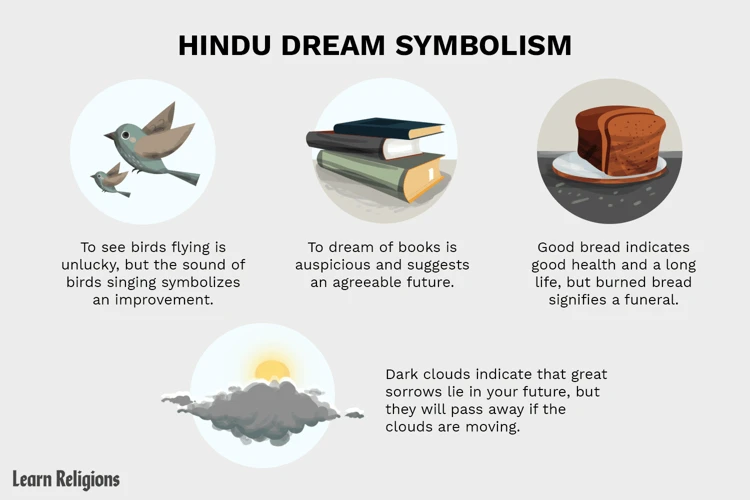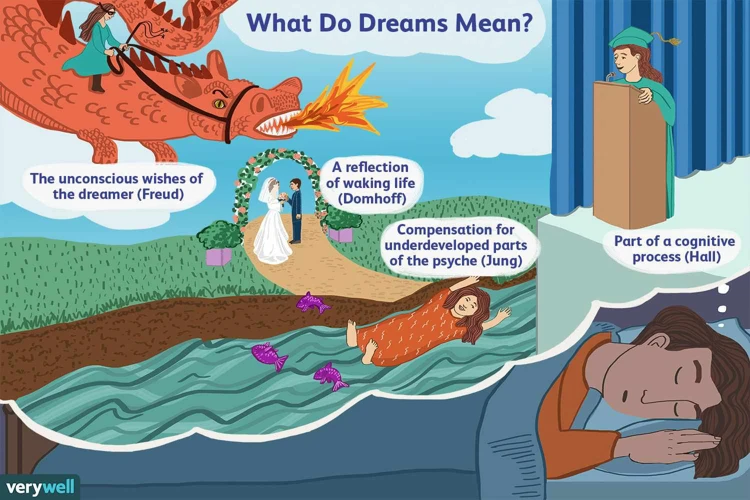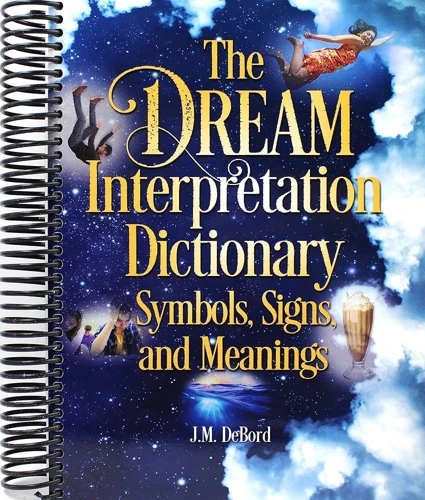Dreams have always held a mysterious fascination for human beings, serving as gateways to uncharted realms of the subconscious mind. Within the realm of dreams, motifs emerge, representing symbols that carry deeper meanings and insights. Exploring these dream motifs opens the door to a rich tapestry of symbolism that can provide us with a greater understanding of ourselves and our emotions. In this article, we will embark on a journey to unravel the significance of dream motifs, delve into the meanings behind common dream symbols, learn techniques for interpreting dream motifs, and discover the benefits of keeping a dream journal. So, prepare to step into the realm of dreams and unlock the secrets that lie within.
The Importance of Dream Motifs

Understanding Dreams and Their Symbolism is crucial in deciphering the messages hidden within our subconscious minds. Dream motifs form the foundation of these messages, serving as the visual and symbolic representations of our deepest thoughts, fears, and desires. By analyzing and interpreting these motifs, we can gain invaluable insights into ourselves and our emotional well-being. Whether it’s a dream about flying, falling, or even teeth falling out, each motif carries its own unique significance. These motifs can be archetypal symbols that have universal meanings or personal symbols that hold significance within our own lives. Exploring the emotional context, analyzing symbols, and examining dream patterns are key aspects of deciphering the importance of dream motifs. Through this exploration, we can embark on a profound journey of self-discovery and personal growth.
1. Understanding Dreams and Their Symbolism
Understanding Dreams and Their Symbolism is a journey into the enigmatic realm of the subconscious mind. Dreams are the mystical landscapes that our minds create as we sleep, filled with symbols and narratives that reflect our innermost desires, fears, and conflicts. When we dive into understanding dreams and their symbolism, we begin to unravel the hidden meanings behind these surreal experiences. Dreams often communicate through metaphors and symbols, acting as a window into our deeper consciousness. From flying to falling, each dream motif carries its own unique significance and interpretation. These symbols can be influenced by cultural or personal associations, allowing us to tap into collective knowledge or explore our individual experiences. Through a deeper understanding of dreams and their symbolism, we gain insight into our emotions, past experiences, and even aspects of our future selves. So, let’s delve into the perplexing world of dreams and unlock the secrets they hold.
2. Significance of Dream Motifs
The significance of dream motifs lies in their ability to provide us with a window into our subconscious mind. These motifs act as powerful symbols that transcend language barriers, allowing our inner thoughts and emotions to manifest in visual representations. Each dream motif carries its own unique meaning, which can vary depending on cultural, personal, and psychological factors. By exploring these motifs, we can gain a deeper understanding of our fears, desires, unresolved issues, and even hidden strengths. For example, dreaming of flying may symbolize a sense of freedom, ambition, or the desire to escape from a challenging situation. Falling in a dream could represent a loss of control, insecurity, or a fear of failure. Teeth falling out might signify feelings of vulnerability, loss, or the need for better self-expression. Being chased in a dream may reflect anxiety, unresolved conflicts, or the need to confront a pressing issue. And being naked in public might represent feelings of vulnerability, insecurity, or a fear of judgment. The significance of dream motifs lies in their ability to provide us with valuable insights, enabling personal growth and self-reflection.
Common Dream Motifs and Their Meanings

Common dream motifs are fascinating portals into the depths of our subconscious minds. One such motif is the dream of flying, which often signifies a sense of freedom, empowerment, or the desire to escape from limitations in waking life. On the other hand, dreams of falling may indicate feelings of insecurity, vulnerability, or losing control over a situation. Teeth falling out in dreams symbolize anxieties related to communication, self-expression, or concerns about personal appearance. Being chased in a dream can represent unresolved conflicts, fears, or the need to confront something in waking life. Another common motif is the dream of being naked in public, which reflects feelings of vulnerability, exposure, and the fear of being judged. Each of these motifs carries its own unique message, and by delving into the meanings behind them, we can gain a deeper understanding of ourselves and our emotions.
1. Flying
Flying is a common dream motif that often symbolizes freedom, liberation, and a sense of empowerment. When we dream about flying, it can be a reflection of our desire to rise above challenges, escape limitations, or explore new possibilities. This dream motif can also represent a sense of control and mastery over our lives. Additionally, flying dreams can serve as a metaphor for personal growth and the ability to overcome obstacles. It’s important to note that the interpretation of flying in dreams can vary from person to person, depending on the individual’s experiences and emotions. To delve deeper into the specific meaning of flying dreams, it’s essential to consider personal associations and emotional context. By examining the details and emotions surrounding the flying dream, we can gain a clearer understanding of its significance in our lives. So, whether you find yourself soaring through the skies or hovering above the ground, exploring the symbolism of flying in your dreams can lead to valuable insights and self-discovery.
2. Falling
Falling is one of the most common dream motifs that people experience. Symbolically, it can represent a loss of control, a fear of failure, or a sense of insecurity in waking life. Falling dreams often evoke intense emotions of vulnerability and powerlessness. The sensation of plummeting, whether from a great height or into an endless abyss, can be a manifestation of subconscious anxieties or unresolved issues. It is essential to consider the emotional context and personal associations when interpreting this dream motif. By recognizing the significance of the falling motif in our dreams, we can gain insights into areas where we may feel out of control or overwhelmed, helping us address these areas and regain a sense of stability and empowerment.
3. Teeth Falling Out
Teeth falling out is a commonly reported dream motif that can evoke feelings of anxiety and unease. This dream motif is often associated with issues of self-image, personal power, and communication. When teeth symbolically fall out in a dream, it can represent a fear of losing control or a sense of powerlessness in waking life. It may also reflect insecurities about appearance or concerns about how others perceive us. Additionally, teeth falling out in a dream can be linked to difficulties in expressing oneself or a fear of being misunderstood. While the exact interpretation can vary for each individual, exploring the emotional context and personal associations linked to this dream motif can provide deeper insights into its significance. Understanding the symbolism behind teeth falling out can help us gain a better understanding of our own emotions and address the underlying issues that may be manifesting in our dreams.
4. Being Chased
Being chased is a common dream motif that can evoke feelings of fear, vulnerability, and a sense of urgency. This dream symbolizes a desire to escape or avoid certain situations or aspects of our lives that are causing stress or anxiety. The pursuer in the dream may represent a person, an unresolved conflict, or even our own fears and insecurities. It is important to pay attention to the emotions and surroundings during the chase, as they can provide additional insights into the specific areas of our lives that we may be trying to evade or confront. By facing the subconscious fears and tackling the underlying issues represented in this dream motif, we can find empowerment and overcome obstacles that may be hindering our personal growth and well-being.
5. Naked in Public
Being naked in public is a common dream motif that often elicits feelings of vulnerability, embarrassment, and exposure. This dream symbolizes a fear of judgment and scrutiny from others. It may reflect an underlying fear of being seen for who we truly are, stripped of any masks or pretenses. Additionally, being naked in public can represent a desire for authenticity and a longing to express ourselves openly and honestly. This dream motif often arises during times of heightened self-awareness or when we are experiencing a significant change or transition in our lives. It is essential to consider the emotional context of the dream and any personal associations we may have with nudity or public exposure. By reflecting on these elements, we can gain a deeper understanding of the message that this dream motif is trying to convey.
Interpreting Dream Motifs

When interpreting dream motifs, it’s important to consider various factors that can shed light on their meanings. One approach is to analyze the symbols and archetypes present in the dream. These symbols may have universal meanings based on cultural, mythological, or psychological associations. Another aspect to consider is personal associations. Personal experiences, memories, and emotions can influence the symbolism within dreams. Exploring the emotional context of the dream can provide significant insights into its underlying messages. Additionally, examining dream patterns, such as recurring motifs or themes, can offer valuable clues about their significance. By combining these interpretive methods, dreamers can begin to unravel the hidden messages and gain a deeper understanding of their dreams and themselves.
1. Analyzing Symbols and Archetypes
Analyzing symbols and archetypes is a fundamental step in unlocking the deeper meanings behind dream motifs. Symbols in dreams can be both universal and personal, carrying layers of significance. Universal symbols, such as flying or falling, have common interpretations that span different cultures and societies. These symbols tap into our collective unconscious, representing primal emotions and desires. On the other hand, personal symbols are unique to each individual and are shaped by their experiences, memories, and associations. By examining the context in which these symbols appear and exploring their archetypal meanings, we can gain a deeper understanding of the messages our dreams are trying to convey. Whether it’s the symbolism of being chased or the significance of being naked in public, analyzing symbols and archetypes allows us to uncover the hidden truths within our dreams.
2. Considering Personal Associations
Considering Personal Associations is an important aspect of interpreting dream motifs. While certain symbols may have universal meanings, personal associations play a significant role in unlocking the true significance of dream motifs. Each person has their own unique experiences, memories, and emotions that shape the way they perceive and interpret symbols in their dreams. For example, someone who has had a positive experience with twins may view a dream about being pregnant with twins (/dream-pregnant-with-twins/) as a symbol of abundance and joy. On the other hand, someone with a phobia of overflowing toilets (/dream-overflowing-toilet/) may associate this motif with feelings of anxiety
Subscribe to Our Newsletter
Sign up to receive the latest news and updates.
3. Exploring Emotional Context
Exploring the emotional context of dream motifs is a vital aspect of understanding their significance. Our dreams often act as reflections of our emotional state and can provide valuable insights into our subconscious thoughts and feelings. The emotions experienced within a dream can serve as clues to uncover the underlying meaning behind the motifs present. For example, a dream of being chased may evoke feelings of fear or anxiety, indicating a sense of being pursued or overwhelmed in waking life. By paying close attention to our emotional reactions within dreams, we can gain a deeper understanding of the messages our subconscious is trying to convey. This emotional exploration allows us to connect with the core of our being and discover profound truths about ourselves and our inner world.
4. Examining Dream Patterns
Examining Dream Patterns is an essential step in unlocking the deeper meaning behind our dreams. Dream patterns refer to recurring themes, motifs, or scenarios that frequently appear in our dreams over a period of time. By identifying these patterns, we can gain a deeper understanding of our subconscious mind and the messages it is trying to convey. Paying attention to the frequency of certain motifs, such as being chased or falling, can provide valuable insights into our fears, anxieties, or unresolved issues. Additionally, recognizing patterns in the emotional context of our dreams can help us uncover recurring emotions or themes that we may need to address in our waking lives. Examining dream patterns allows us to create a holistic view of our dream landscape, enabling us to connect the dots and gain a clearer understanding of ourselves and our inner world. So, next time you wake up from a dream, take a moment to reflect on any recurring motifs or themes that may hold the key to unlocking the deeper meanings of your dreams. For further exploration of dream symbolism, you can also consider the biblical meaning of toes in dreams, which can add a unique layer of interpretation to your dream analysis.
Keeping a Dream Journal
Keeping a Dream Journal is an invaluable tool for capturing the ephemeral world of dreams and unlocking their deeper meanings. Dreams can be fleeting and easily forgotten upon waking, so maintaining a journal allows us to preserve and examine the details of our dreams. The benefits of keeping a dream journal are vast. It not only helps us remember dreams more effectively, but also enables us to identify recurring motifs and patterns, providing insights into our subconscious mind. Starting a dream journal can be as simple as keeping a notebook by your bedside or using a dedicated dream journal app. Recording dreams immediately upon waking is crucial to capture the nuances and emotions of the dream. Over time, the dream journal becomes a valuable resource for self-reflection and personal growth as we begin to recognize the symbolism and meanings behind our dreams. So, grab your pen or open a new digital document, and embark on the wonderful journey of recording your dreams in a dream journal.
1. The Benefits of Keeping a Dream Journal
Keeping a Dream Journal can be a powerful tool for unlocking the hidden meanings and insights within our dreams. Here are some of the benefits of maintaining a dream journal:
1. **Enhanced Dream Recall**: When we make a habit of recording our dreams, our ability to recall them improves. By jotting down the details of our dreams as soon as we wake up, we capture the nuances and vividness that might have otherwise faded from our memory.
2. **Identification of Patterns**: A dream journal allows us to notice recurring themes, symbols, and motifs that appear in our dreams. These patterns can provide valuable clues about our subconscious thoughts, emotions, and unresolved issues.
3. **Emotional Healing and Self-Reflection**: Writing about our dreams helps us explore the emotions and experiences they evoke. It provides a safe space for self-reflection, enabling us to process and understand our feelings on a deeper level.
4. **Personal Growth and Self-Discovery**: Through a dream journal, we can uncover hidden aspects of ourselves, gain insights into our fears, desires, and aspirations, and embark on a journey of self-discovery and personal growth.
By regularly recording our dreams in a journal, we create a bridge between our conscious and unconscious minds, allowing us to tap into the wisdom and guidance that our dreams provide. So, grab a notebook or start a digital journal, and begin capturing the rich tapestry of your dream world.
2. How to Start and Maintain a Dream Journal
Starting and maintaining a dream journal is a powerful tool for uncovering the meanings behind our dreams. To begin, find a journal or notebook specifically dedicated to recording your dreams. Place it beside your bed along with a pen or pencil. As soon as you wake up, strive to write down every detail that you can remember about your dream, no matter how fragmented or nonsensical it may seem. Be sure to include the date and any significant emotions experienced during the dream. Over time, patterns and recurring motifs may emerge, providing deeper insights into your subconscious mind. Consider using a table or list format to organize your dream entries for easy reference. The process of journaling not only helps in recalling dreams more vividly but also strengthens the connection between the conscious and unconscious mind. By consistently documenting your dreams, you will create a valuable resource for interpreting and understanding the symbolism within them. So, grab your journal, sharpen your pen, and embark on an enlightening journey of self-discovery through the pages of your dreams.
Conclusion
In conclusion, exploring dream motifs provides us with a powerful tool for understanding our subconscious minds and unraveling the hidden meanings within our dreams. The significance of dream motifs lies in their ability to connect us with our deepest fears, desires, and emotions. By analyzing symbols and archetypes, considering personal associations, and exploring the emotional context, we can gain valuable insights into ourselves and our lives. Examining dream patterns and keeping a dream journal also play essential roles in this process. So, embrace the journey of dream exploration, and unlock the profound wisdom that awaits within the realm of dreams. To delve deeper into the symbolism of specific dream motifs, you can explore the biblical meaning of toes in dreams, which offers a unique perspective and insights into this specific symbol.
Frequently Asked Questions
1. Can dream motifs have different meanings for different individuals?
Yes, dream motifs can have different meanings for different individuals. While some symbols may have universal interpretations, personal experiences, cultural backgrounds, and individual associations can influence the symbolism and meaning of dream motifs.
2. Are there common dream motifs that many people experience?
Yes, there are common dream motifs that many people experience. Some of these motifs include flying, falling, teeth falling out, being chased, and being naked in public. These motifs tend to reflect common fears, desires, and anxieties shared by many individuals.
3. Are dream motifs always symbolic or can they be literal?
Dream motifs are often symbolic representations rather than literal occurrences. They serve as metaphors or messages from the unconscious mind. However, it is also possible for dream motifs to have literal interpretations, especially if they directly reflect recent experiences or events in a person’s life.
4. Can dream motifs predict the future?
Dream motifs do not have the ability to predict the future in a literal sense. However, they can provide insights into a person’s emotional state, unresolved issues, or subconscious desires, which may influence future actions and decisions.
5. Is there a specific dictionary of dream motifs and their meanings?
While there are various dream dictionaries available, it’s important to remember that dream interpretation is subjective and personal. Symbols may have different meanings for different individuals. It’s best to approach dream motifs with an open mind and consider personal associations and emotional context.
6. Can dream motifs be influenced by external factors?
Yes, dream motifs can be influenced by external factors such as stress, emotions, daily experiences, and even media or literature that we may have encountered. These external influences can shape the content and symbolism of our dreams.
7. How can I effectively analyze dream motifs?
To effectively analyze dream motifs, it is important to consider the symbols and archetypes present, personal associations, emotional context, and any recurring patterns within your dreams. Keeping a dream journal can also aid in the analysis process.
8. Can dream motifs help with personal growth and self-discovery?
Absolutely! Dream motifs offer a unique gateway to the subconscious mind, allowing for self-reflection, exploration, and personal growth. By understanding the underlying messages and symbolism within dream motifs, individuals can gain insights into their fears, desires, and unresolved issues, leading to a deeper understanding of themselves.
9. Is it necessary to analyze every dream motif?
It is not necessary to analyze every dream motif. Some dreams may hold more significance than others, and it’s natural for certain motifs to be more prominent at different times. Pay attention to recurring motifs or symbols that evoke strong emotions as these may hold valuable insights.
10. Can keeping a dream journal enhance the understanding of dream motifs?
Absolutely! Keeping a dream journal allows you to record and recall your dreams more effectively. It helps in identifying patterns, recurring symbols, and emotions associated with certain dream motifs. This practice can greatly enhance your understanding and interpretation of dream motifs.










